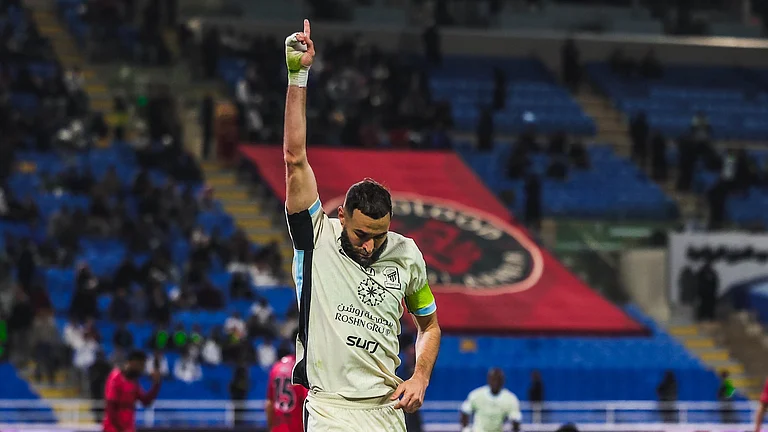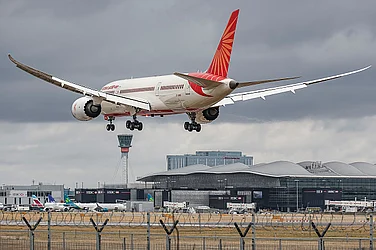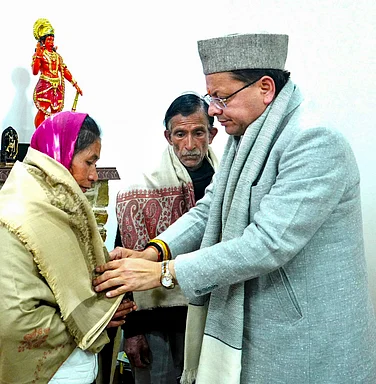Chief minister Nara Chandrababu Naidu is a man on a mission, this being the setting up of the new capital of Andhra Pradesh. After the formation of Telangana state, the Centre-appointed K.C. Sivaramakrishnan committee got to work and began scouting for areas to locate the capital zone of the residuary state. Naidu was initially reluctant to discuss the matter, saying it was up to the panel to suggest the ideal location. However, once the Sivaramakrishnan panel submitted its report saying the Vijayawada-Guntur region was “unfeasible and undesirable”, saying it would add to the “honeypot” character similar to that of Hyderabad, Naidu saw red. The panel felt that locating a capital in this region would take away from the growth prospects of other centres in the state.
The Sivaramakrishnan panel suggested three alternatives; the Vizag sub-region, the Rayalaseema arc and the Kalahasti spine. Naidu was quick to dismiss these suggestions. The Telugu Desam government has decided to locate the capital between Vijayawada and Guntur or what is called the Vijayawada-Guntur-Tenali-Mangalagiri (VGTM) region. “Vijayawada will be the nucleus and the rest will happen over time,” says Parakala Prabhakar, communications advisor to the Andhra Pradesh government.

There has been significant pressure on Naidu to locate the capital in the Rayalaseema region, whose Chittoor district he counts as his home base. Opposition leader Y.S. Jaganmohan Reddy has consistently built a lobby to campaign for this. But Naidu feels a world-class capital can be built only around Vijayawada, located on the banks of the Krishna river. There are two national highways passing through Vijayawada, a commercially developed city. Also, the city railway station is the third busiest in India, with 320 trains passing through every day.
The names doing the rounds for the new capital are Tarakarama Nagar (after the late NTR) and Amaravathi. State agriculture minister P. Pulla Rao says farmers are willing to part with 8,000 acres if the capital is named after NTR. Some other ministers argue that since a slum locality in Hyderabad is named NTR Nagar, the name wouldn’t be apt for a high-class capital that’s aiming to attract investors.
In that case, Amaravathi, the name of a temple town in Guntur district, would be more suitable, argues irrigation minister D. Umamaheshwar Rao. The minister taunts Jagan, saying he’s nurturing daydreams that the new capital will be located in the latter’s Idupulapaya estate in Kadapa. Jagan has consistently argued that an assembly discussion should have preceded the announcement. “Why is there an assembly and an Opposition if the government simply announces the capital without a discussion?” he asks. “What is this ridiculous method of Naidu’s that he makes a statement on the capital first, then calls for a debate?”
Meanwhile, farmers around Guntur, Vijayawada, Mangalagiri, Nuzvid and Tenali have seen prices of their land hitting astronomical rates. Farmland worth Rs 10-20 lakh an acre now cost anywhere between Rs 2-5 crore. In some places close to the highways, prices are a mind-boggling Rs 10 crore an acre already.
Concern has been expressed by the Sivaramakrishnan panel that locating the capital in the fertile VGTM zone would affect agricultural land, forests and the famous mangroves of Nuzvid. Human Rights Forum general secretary V.S. Krishna argues that discarding the panel’s recommendations and setting up a “super city” will negatively impact food security, farmers and agricultural labour. “This will cause serious environmental damage, it’s a historic blunder,” says HRF.

Cap this? Guntur town
It’s estimated that a new capital will require an investment of Rs 1.40 lakh crore and about 25,000 acres of land. The AP government has constituted a cabinet subcommittee to acquire the required land. There is already an advisory committee which comprises, other than the netas, G.V. Sanjay Reddy of the gvk Group, Bommidala Srinivas of gmr Group, Nuziveedu Seeds Ltd chairman M. Prabhakar Rao and Peepul Capital chief Chintalapati Srinavasa Raju. The panel is to visit cities abroad such as Singapore, Brasilia, Putrajaya, Islamabad and Dubai for tips on setting up a capital city. In India, members hope to learn lessons in Navi Mumbai, Naya Raipur, Chandigarh and Gandhinagar.
Former MP and tobacco growers leader Yalamanchili Sivaji says the land acquisition itself will take 5-6 years and the building of the capital city around 10 years. “The lower level administration in departments such as wakf board, endowments, urban development authority, municipal and civic bodies, health, mines and minerals are not geared up to meet these developments. Real estate sharks have already encroached into 10,000 acres of public land. Many don’t realise that the so-called forest land in Nuzvid simply isn’t there. It’s all been encroached. Also, land acquisition is not as simple as it looks. Acquiring land for a small irrigation project like Pulichintala (Guntur-Nalgonda) took 10 years,” Sivaji explains.

A roundabout in Visakhapatnam. (Photograph by Jitender Gupta)
He also feels that it is better to decentralise government departments. “The endowments commissioner can shift to Tirupati, the director of ports can operate from Kakinada and the director of treasury can function from Machilipatnam. The secretariat and high court can be stationed in the Acharya Nagarjuna University in Guntur,” Sivaji says. But minister P. Narayana says it is not logical to establish different directorates in different districts of the state. “Department secretaries and heads of department should obviously be in one place for a smooth administration,” Narayana feels.
Meanwhile, fresh trouble is brewing. Students’ protests have already begun in Kurnool against the decision to locate the capital in the Vijayawada region. So even before acquiring land, Naidu has a bigger problem on his hands, that of convincing people in the other regions.
By Madhavi Tata in Hyderabad


























